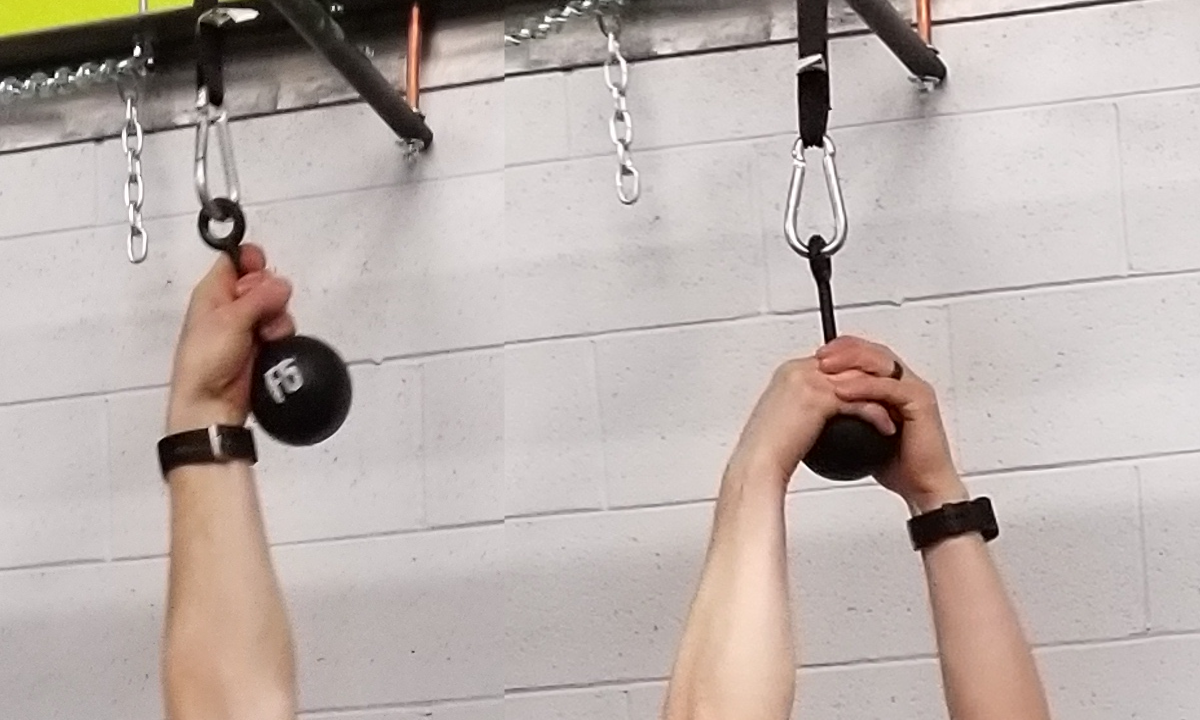Still completely mucked-up from a race I was spectating at a multi-rig while recovering with a banana and pop-tart in one hand, and a hoppy beverage in the other. No shoes on and having a great time watching people struggle while traversing through grip combos when I see a girl fly through with seemingly no effort at all. She was completely unphased by any wicked grip in her path. Suddenly, I heard a voice in my head notice that she didn’t grab onto that ball-shaped grip the same way I did, and fall completely to the ground like I did. This made me wonder why I didn’t try to cross it the same way? The terrible answer to this is because I now realize that I suffer from Irrational Grip Guilt Syndrome, or simply known to the medical community and abbreviated as (IGGS). Maybe.
I knew there was no rule about using a specific grip method for crossing these obstacles, and most of us understand that the simple universal rule for obstacle rigs is that the racer must complete the obstacle without touching the ground.
I am not fully sure of how common it is to hear people afflicted by IGGS to accuse others of cheating if they spot a victorious athlete reach for cables and stems rather than gripping the dangling colored object below. I am however sure that there are others like me with IGGS and don’t even know it.
Most importantly the question is now how do we reconcile with this illness and restore our thoughts back to happiness?
First, we need to understand that multi-rigs, and grips on multi-rigs are themselves just products and are no different than products created by every other company around the world.
Users cannot be blamed for using products based on how the design may or may not have been intended to be used. Humans automatically do what they feel makes the most sense. It is a brilliant problem-solving mechanism that leads to innovative solutions and methods.
Second, we need to embrace natural human solving behavior. Businesses can learn a lot from paying attention to human behavior. Perhaps my favorite example of embracing human problem-solving behavior is with the story of the Block Ness Monster. Originally designed to be walked across by two people. Can you imagine what sort of a terrible mistake it would have been if Will Dean insisted that people use it as originally intended? So much magic happens when users figure problems out for themselves.
Another fantastic example of human behavior defining an obstacle is the story of Spartan’s Twister rig. An obstacle that Spartan has recognized as having a problem with creating blisters. Spartan’s product development team decided to place a rotating grip to alleviate the users hand carnage, but now that Spartan has solved the blister problem, they have only created the new problem of everyone just falling prey to the burpee monster. Since this new problem developed a pioneer named Andrea Owen has created an Instagram post of how she simply just doesn’t use the rotating handle section of the rig. Andrea suggests to just grab the upright part of the handles. If Andrea was to only focus on how she was intended to use the obstacle she would have never discovered such a brilliant solution.
Spartan has since opened lanes with both grip options, and I openly applaud their dedication to the concern for their fanatics suffering.
In summation. If you suffer from Irrational grip guilt syndrome or know someone that does; realize that human problem-solving actions are to be celebrated, and creating products is not easy. Recognize that the guilt over grip position is in fact just irrational guilt based on social expectations, so quit being a curmudgeon, and continue to have fun.
Disclaimer: The viewpoints expressed by the authors do not necessarily reflect the opinions, viewpoints and official policies of Mud Run Guide LLC, or their staff. The comments posted on this Website are solely the opinions of the posters.



Leave A Comment